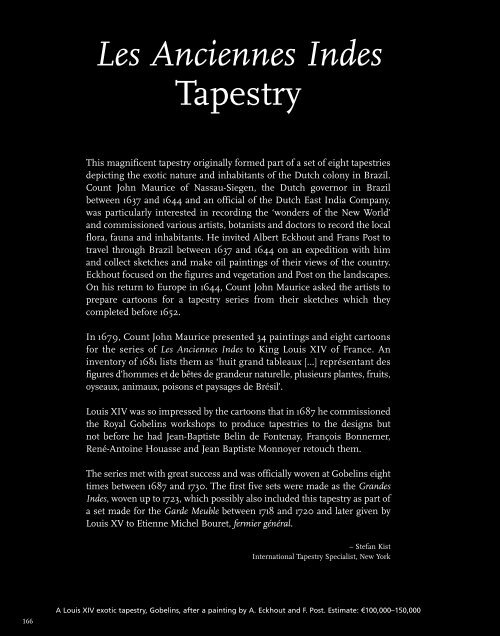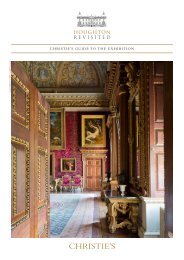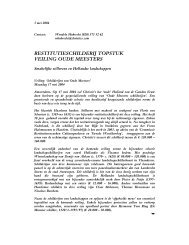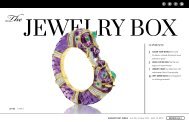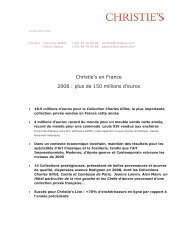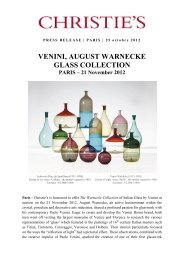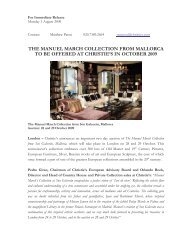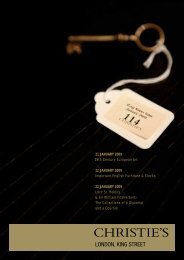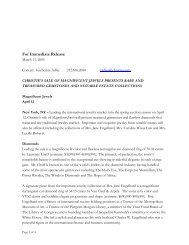Yves Saint Laurent Pierre Bergé - Christie's
Yves Saint Laurent Pierre Bergé - Christie's
Yves Saint Laurent Pierre Bergé - Christie's
Create successful ePaper yourself
Turn your PDF publications into a flip-book with our unique Google optimized e-Paper software.
166<br />
Les Anciennes Indes<br />
Tapestry<br />
This magnificent tapestry originally formed part of a set of eight tapestries<br />
depicting the exotic nature and inhabitants of the Dutch colony in Brazil.<br />
Count John Maurice of Nassau-Siegen, the Dutch governor in Brazil<br />
between 1637 and 1644 and an official of the Dutch East India Company,<br />
was particularly interested in recording the ‘wonders of the New World’<br />
and commissioned various artists, botanists and doctors to record the local<br />
flora, fauna and inhabitants. He invited Albert Eckhout and Frans Post to<br />
travel through Brazil between 1637 and 1644 on an expedition with him<br />
and collect sketches and make oil paintings of their views of the country.<br />
Eckhout focused on the figures and vegetation and Post on the landscapes.<br />
On his return to Europe in 1644, Count John Maurice asked the artists to<br />
prepare cartoons for a tapestry series from their sketches which they<br />
completed before 1652.<br />
In 1679, Count John Maurice presented 34 paintings and eight cartoons<br />
for the series of Les Anciennes Indes to King Louis XIV of France. An<br />
inventory of 1681 lists them as ‘huit grand tableaux […] représentant des<br />
figures d’hommes et de bêtes de grandeur naturelle, plusieurs plantes, fruits,<br />
oyseaux, animaux, poisons et paysages de Brésil’.<br />
Louis XIV was so impressed by the cartoons that in 1687 he commissioned<br />
the Royal Gobelins workshops to produce tapestries to the designs but<br />
not before he had Jean-Baptiste Belin de Fontenay, François Bonnemer,<br />
René-Antoine Houasse and Jean Baptiste Monnoyer retouch them.<br />
The series met with great success and was officially woven at Gobelins eight<br />
times between 1687 and 1730. The first five sets were made as the Grandes<br />
Indes, woven up to 1723, which possibly also included this tapestry as part of<br />
a set made for the Garde Meuble between 1718 and 1720 and later given by<br />
Louis XV to Etienne Michel Bouret, fermier général.<br />
– Stefan Kist<br />
International Tapestry Specialist, New York<br />
A Louis XIV exotic tapestry, Gobelins, after a painting by A. Eckhout and F. Post. Estimate: 3100,000–150,000


